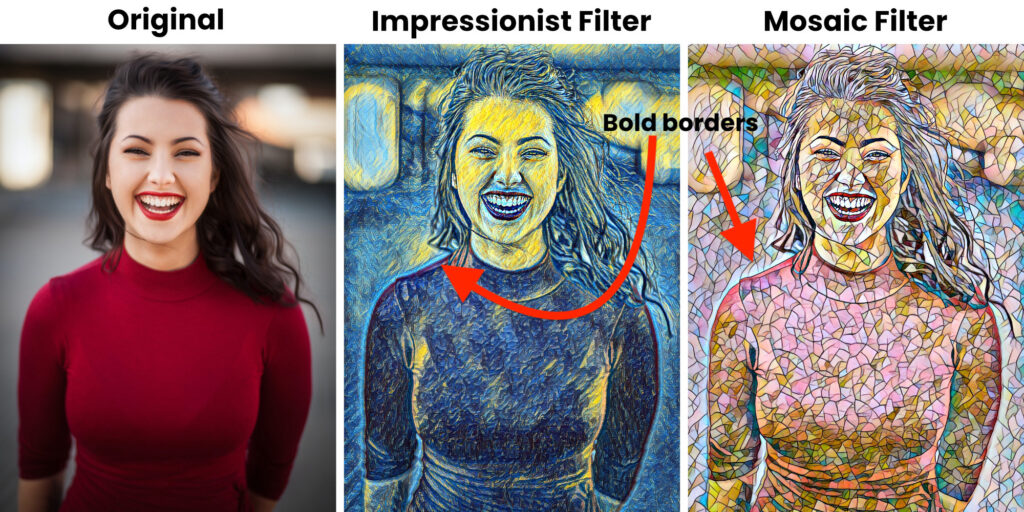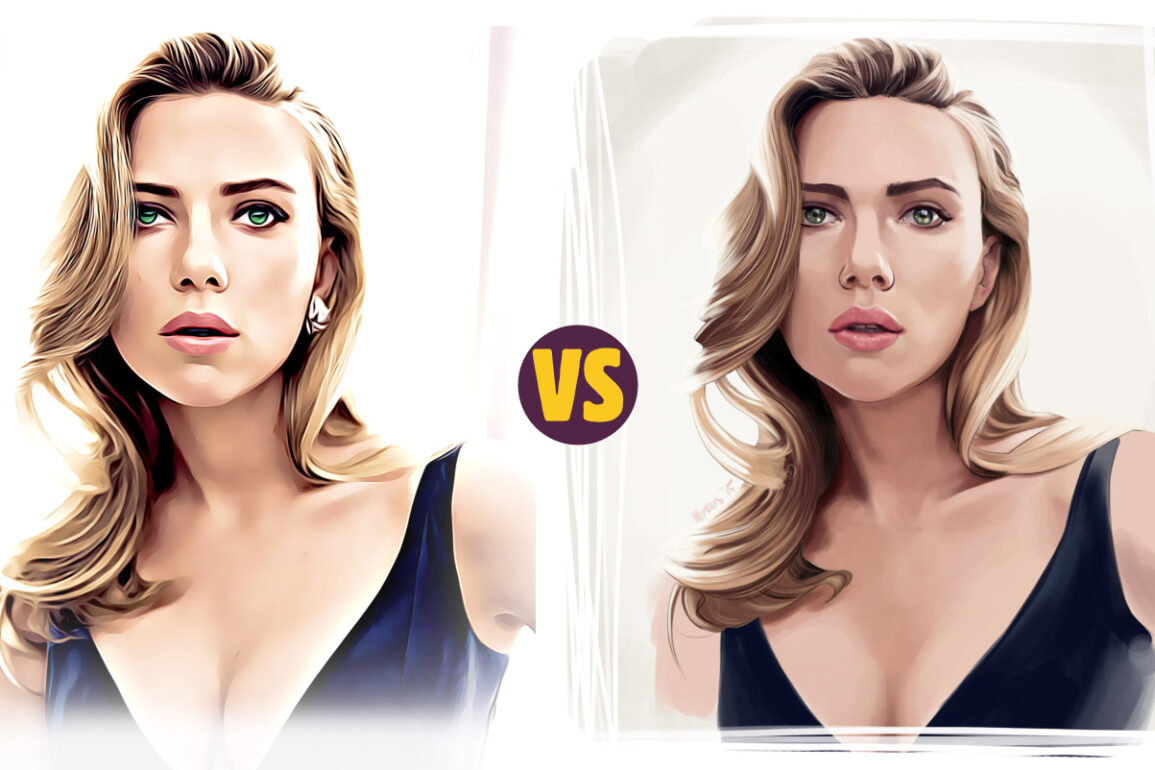No matter where your skill level might be, there’s an intense feeling of satisfaction that comes from finishing a piece of art you’re proud of. Whether it’s a twenty-minute sketch or a four day painting, it’s nice to sit back and appreciate the fruits of your labor. You made that.
Besides fostering a sense of personal accomplishment, creating art has also become a path to popularity on social media. Having a knack for markers and pens can garner just as much attention on Instagram as a glamor model with a Ferrari.
It’s no surprise then to see the proliferation of art filter apps. Often free or very cheap, these applications promise to transform photos into works of art with just one tap. Snap a selfie and see yourself sketched in pencil, painted in oils or other mediums. Some of these apps can even mimic the styles of old masters like Michelangelo, Monet or Van Gogh.
While many still generate fairly crude imitations, the software behind them is improving – and with AI and neural networks analyzing each image, they’ll get better all the time.
For artists that have spent a lifetime learning their craft, these apps offer a troubling question: do they devalue their work? And are filtered photos actually art?
Editing vs filtering
The first step in breaking down this topic is making the distinction between editing and filtering a photo.
If you’ve drawn something with traditional mediums on paper or canvas, it can be a real challenge to do the piece justice in a single photo. A range of variables can affect how the art is captured by the camera – ambient lighting, color balance, shadows and more can all skew its appearance.
Editing a photo, whether it’s with Photoshop or your phone’s built in app, is the best way to help the art look as true to life as possible. Adjusting values that were already part of the picture means nothing was added or removed from the original image.
Filtering a photo on the other hand goes a step further. By overlaying color layers, cranking hues, removing blemishes and many other options, the picture can no longer be said to represent the original art. It has been altered beyond what was captured in reality.
Does using an art filter app count as art?
This is an understandable question considering the marketing used with many of these apps. “Be an artist with AI” or “Unveil your artistic masterpiece on social media” is common wording on their app store listings.
The truth is that all photos can be said to have some artistic merit, but there is a distinction: A photograph, however filtered, is still a photograph and falls under the artistic umbrella of photography. A photograph that looks like a pencil sketch, is not a pencil sketch. If anyone can use the same app with the same filter to achieve the same result, it remains the original photograph alone that’s unique.
The value always follows what’s unique.
If someone enjoys applying oil painting filters to their photos, more power to them. It’s when they tout those photos as original oil paintings that’s a problem.
Using an art filter is NOT the same as creating digital art
Digital artists in particular have to deal with a long standing stigma around using software to create art. For the uninitiated, it might seem like like anyone can become the next Loish with a few taps of an app. In reality, it takes a few thousand taps.
While digital drawing tools might be able to emulate traditional mediums, the difference is in how they’re applied. A digital artist using a digital pencil will take just as many strokes to create a sketch as a real pencil. Each stroke is unique and will never happen the same way twice – the polar opposite of an art filter app.
How to tell if an image was made with an art filter app
When you can spot the auto-art from the real deal, it helps the genuine hard work artists put in become that much more special and valuable.
Here are a few ways to identify if a picture was created with an art filter:
1. Check the borders

The borders around people, hair or other forms is often skewed in filtered photos. If you see a subtle halo of light or dark around the main subject, chances are it was filtered.
2. Look for patterns

The programming behind art filters relies on patterns to achieve certain brushstroke effects. If you look closely, you’ll probably see identical strokes layered over the image. These are particularly noticeable in open areas like the sky.
3. Look for unnatural details

While there’s certainly plenty of detail-oriented artists out there, they rarely detail an image uniformly. If every strand of hair, wrinkle, tooth and fabric fold is equally detailed, it was probably filtered with an app.
To summarize
- Art filters are a fun photography tool, but not a replacement for the genuine mediums or artists they try to emulate.
- While digital art and filtered photos might both be made with a computer, they require completely different levels of effort and are not the same thing.
- Art filter photos posted to social media shouldn’t be claimed as handmade drawings or paintings.
- An art filtered photo can almost always be identified under close inspection.


